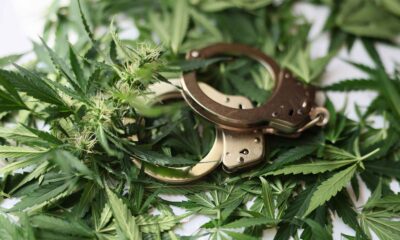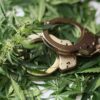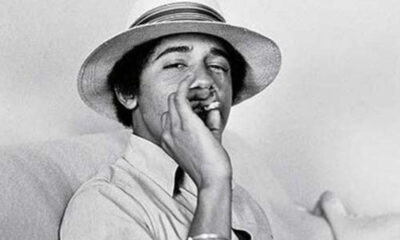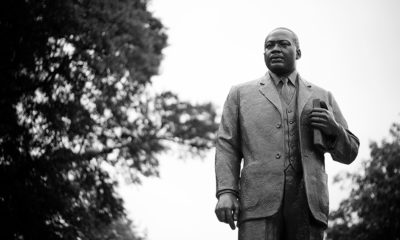
In History
Cannabis Resin Found in Pipes at Shakespeare’s Estate
Did the famous bard get his inspiration for his most famous works from cannabis?
For anyone that had to go through high school English classes, having to read at least some of William Shakespeare’s works is an inevitability. And pouring over the poetic (yet admittedly difficult) texts could be quite the confusing process.
A new study published in the South African Journal of Science may explain how the famous bard got his inspiration for his most famous works: cannabis. The study reports on an analysis done on fragments of clay smoking pipes that were excavated from The Shakespearean Birthplace Trust in Stratford-upon-Avon, the hometown of the legendary playwright.
A team from the South African Police Services Forensic Science Laboratory in Pretoria analyzed residues found in the bowls and stems of 24 pipes using a highly-sensitive gas testing technique known as gas chromatography mass spectrometry. This method allowed the team to recognize what was smoked in the pipes over 400 years ago due to the resins that were left behind.
Out of the 24 pipe samples, eight tested positive for cannabis use and two for Peruvian cocaine from coca leaves. Four of these pipes that tested positive for cannabis were found in Shakespeare’s private gardens.
“There were very low concentrations of cannabis, but the signature was there,” explains Inspector Tommy van der Merwe of the Forensic Laboratory.
But even the low concentrations of cannabis has led some to believe that he had used the substance as a way to bring about inspirations for his writings.
One of these people would be the author of the study, anthropology professor Francis Thackeray from the Evolutionary Studies Institute at the University of the Witwatersrand in Johannesburg. Thackeray references one of the lines from Shakespeare’s Sonnet 76 as possibly being a cryptic reference to his drug use: “Why write I still all one, ever the same/ And keep invention in a noted weed…”
“This can be interpreted to mean that Shakespeare was willing to use ‘weed’ (cannabis as a kind of tobacco) for creative writing (‘invention’),” Thackeray writes in the report, giving a literary analysis that may imply ties to Shakespeare being a marijuana smoker.
Although this may be a perfectly good analysis using the modern term, it is unclear whether the term ‘weed’ was used to refer to the cannabis plant back in the 17th century. In fact, James Shapiro, a professor at Columbia University and a published author on Shakespeare’s life, is not very convinced by Thackeray’s interpretation.
In an interview he did with the Huffington Post, Shapiro explains that “The line ‘keep invention in a noted weed’ is referring to weeds as dressing up, as clothes. The poem is about dressing up language in a certain way and you really have to be insensitive to the poem to force the reading [to be about marijuana use].”
Despite this possible misinterpretation of 17th century vocabulary, Thackeray seems to believe that Shakespeare was referring to the substance discretely to avoid persecution from the church, who had condemned the substance.
“Writers who were explicit about cannabis could have their books burnt,” he explains in an email correspondence with CNN.
Whether or not Shakespeare really did partake in marijuana, this new discovery may shed light upon some of the different botanical uses during the 17th century. Because of the discovery of the coca leaf residue in the pipes, some historians believe that Sir Francis Drake, a contemporary of Shakespeare, may have introduced the plant to England by bringing it back from one of his voyages to Peru.
One of the pipes containing the coca resin was excavated from the “Harvard House,” the home of the mother of the namesake of Harvard College, John Harvard.
To add to the skepticism of it all, there are those who even disagree with this. Daniel Bradburb, a professor of social sciences at Clarkson University, Potsdam, New York, shares that “There seems little evidence that it was exported from South America; the Spanish were aware of it and used it in their mining operations there, however evidence for its European use comes much later.”
Aside from the fervent debate that the study has incited, it is clear that we can learn a good deal from analyzing the pipe fragments.
“We can’t prove that Shakespeare smoked these pipes, but we do now at least know what his contemporaries were smoking,” explains Thackeray.
The scientific analysis of the pipes is still ongoing and Thackeray and his team of researchers plan to attempt to uncover more about the historical use of cannabis from their findings.
Do you think Shakespeare was a cannabis lover? Let us know your opinion in the comments below.























